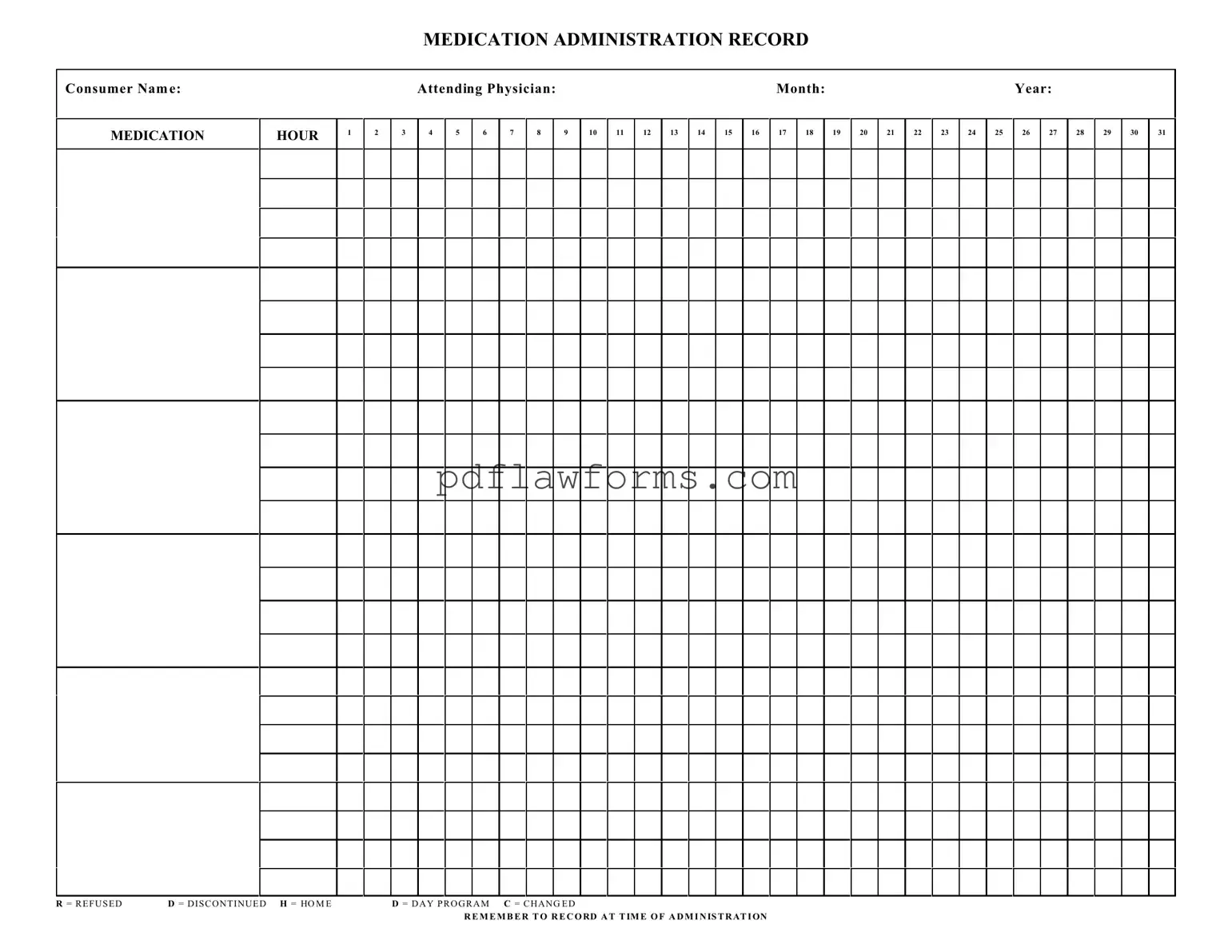Filling out a Medication Administration Record Sheet can be a straightforward process, but several common mistakes can lead to confusion or errors in medication management. One frequent error occurs when the consumer's name is not clearly written. This can result in miscommunication among staff members and potentially jeopardize patient safety. Always ensure that the name is legible and correctly spelled.
Another mistake is failing to record the correct date. The month and year must be accurate to ensure that medications are administered as per the prescribed schedule. An incorrect date can lead to missed doses or administering outdated medications, which could have serious health implications.
Many individuals overlook the importance of documenting the time of administration. Each medication should be recorded at the exact time it is given. This practice helps track adherence to the medication schedule and can alert healthcare providers to any patterns of refusal or missed doses.
Inconsistent use of abbreviations can also create confusion. For instance, using different symbols for the same action—like "R" for refused and "D" for discontinued—can lead to misunderstandings. It is essential to use standardized abbreviations consistently throughout the form to maintain clarity.
Some people neglect to check the attending physician's name, which should be included on the form. This detail is crucial for accountability and ensures that any questions about the medication can be directed to the right person.
Another common oversight is failing to indicate any changes in medication. If a medication has been altered, such as a dosage change, it should be clearly marked on the record. This practice ensures that all staff are aware of the current treatment plan and can provide appropriate care.
Lastly, many individuals forget to sign the record after completing the medication administration. A signature not only confirms that the medication was given but also serves as a legal record of compliance with medication protocols. Always remember to sign and date the record to uphold accountability and transparency.
